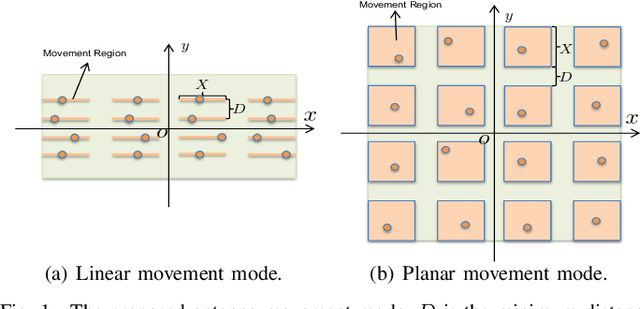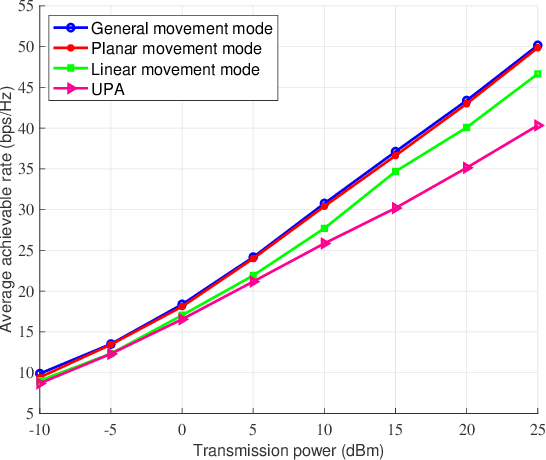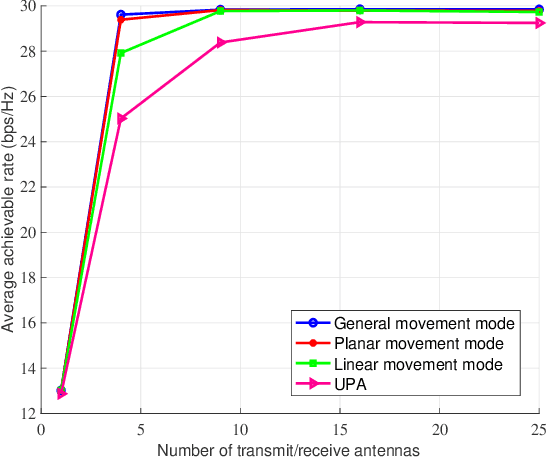Xintai Chen
Energy Efficiency Maximization for Movable Antenna-Enhanced System Based on Statistical CSI
Jan 18, 2025


Abstract:This paper investigates an innovative movable antenna (MA)-enhanced multiple-input multiple-output (MIMO) system designed to enhance communication performance. We aim to maximize the energy efficiency (EE) under statistical channel state information (S-CSI) through a joint optimization of the transmit covariance matrix and the antenna position vectors (APVs). To solve the stochastic problem, we consider the large number of antennas scenario and resort to deterministic equivalent (DE) technology to reformulate the system EE w.r.t. the transmit variables, i.e., the transmit covariance matrix and APV, and the receive variables, i.e., the receive APV, respectively. Then, we propose an alternative optimization (AO) algorithm to update the transmit variables and the receive variables to maximize the system EE, respectively. Our numerical results reveal that, the proposed MA-enhanced system can significantly improve EE compared to several benchmark schemes and the optimal performance can be achieved with a finite size of movement regions for MAs.
Joint Beamforming and Antenna Movement Design for Moveable Antenna Systems Based on Statistical CSI
Aug 18, 2023


Abstract:This paper studies a novel movable antenna (MA)-enhanced multiple-input multiple-output (MIMO) system to leverage the corresponding spatial degrees of freedom (DoFs) for improving the performance of wireless communications. We aim to maximize the achievable rate by jointly optimizing the MA positions and the transmit covariance matrix based on statistical channel state information (CSI). To solve the resulting design problem, we develop a constrained stochastic successive convex approximation (CSSCA) algorithm applicable for the general movement mode. Furthermore, we propose two simplified antenna movement modes, namely the linear movement mode and the planar movement mode, to facilitate efficient antenna movement and reduce the computational complexity of the CSSCA algorithm. Numerical results show that the considered MA-enhanced system can significantly improve the achievable rate compared to conventional MIMO systems employing uniform planar arrays (UPAs) and that the proposed planar movement mode performs closely to the performance upper bound achieved by the general movement mode.
 Add to Chrome
Add to Chrome Add to Firefox
Add to Firefox Add to Edge
Add to Edge